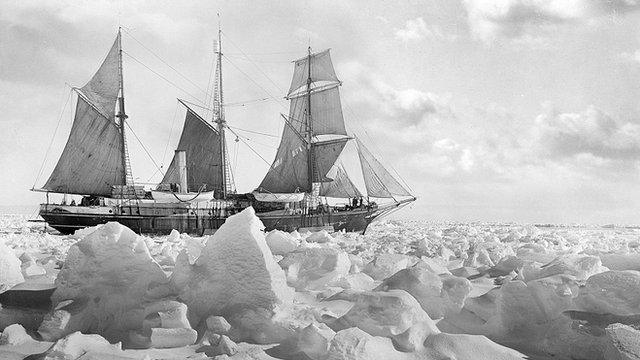Franklin expedition: DNA test identifies member of 1845 Arctic voyage
- Published

A facial reconstruction of the crew member researchers identified as John Gregory
A member of a doomed 1845 Arctic voyage has been identified by researchers who matched his DNA with that of a living descendant from South Africa.
Tests confirmed skeletal remains recovered from an island in northern Canada were those of John Gregory.
Gregory was an officer on British explorer Sir John Franklin's ill-fated expedition to chart the Northwest Passage in the Canadian Arctic.
The expedition was a disaster, ending in the deaths of all 129 crew members.
When their two ships - HMS Erebus and HMS Terror - became trapped in the ice, the crew vanished into the frozen Arctic.
Little is known about the crew and their fate, and the expedition has inspired art, books and TV series with fictionalised depictions of their struggle for survival.
But now, with the help of genetic analysis, a team of researchers from three Canadian universities have put together another piece of the puzzle.
'Unlocking pieces of history'
Bone and tooth samples from Gregory's remains were recovered from King William Island, Nunavut in 2013.
Six years later a man living in Port Elizabeth, South Africa caught wind of a request for DNA samples from possible descendants of Franklin expedition sailors.
Suspecting a family link to a crew member, Jonathan Gregory, 38, sent a swab to researchers.
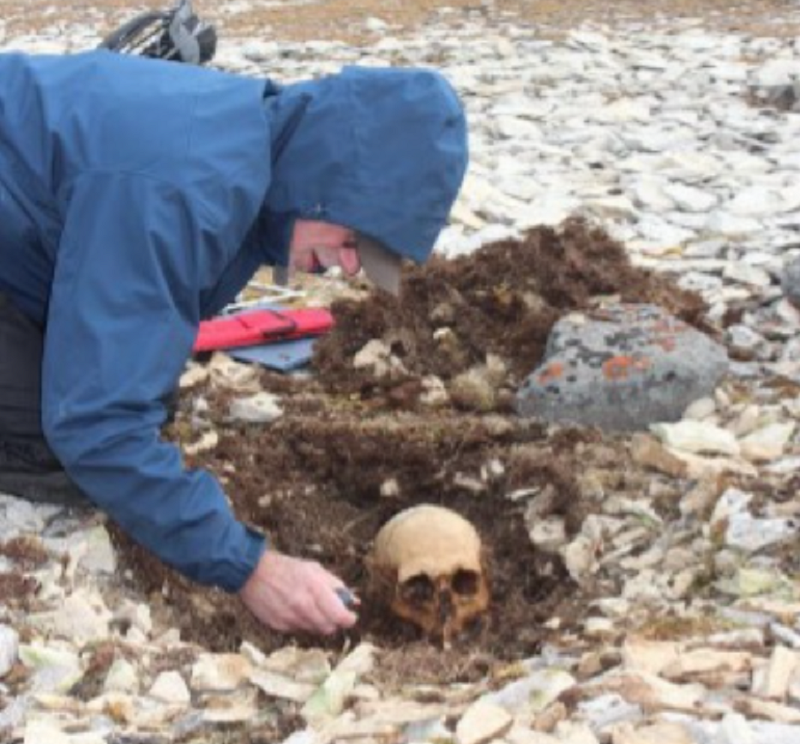
Douglas Stenton excavated John Gregory's remains on King William Island
The tests revealed Mr Gregory was the great-great-great grandson of John Gregory.
The DNA match was "an incredible day for our family, as well as all those interested in the ill-fated Franklin expedition", Mr Gregory said.
"The whole Gregory family is extremely grateful to the entire research team for their dedication and hard work, which is so critical in unlocking pieces of history that have been frozen in time for so long," he added.
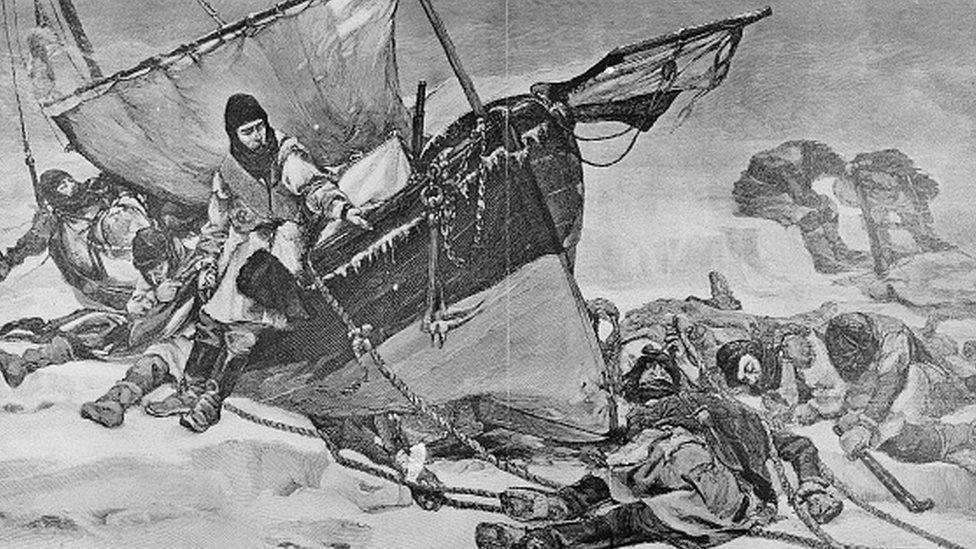
The fate of the Franklin expedition has been depicted in various artworks
The research shed light on his ancestor's final years. It showed that he survived three years locked in the ice on board HMS Erebus, but ultimately perished 75 km (45 miles) south at Erebus Bay.
Researchers from the University of Waterloo, Lakehead University, and Trent University say Gregory is the first member of the expedition to be positively identified through DNA.
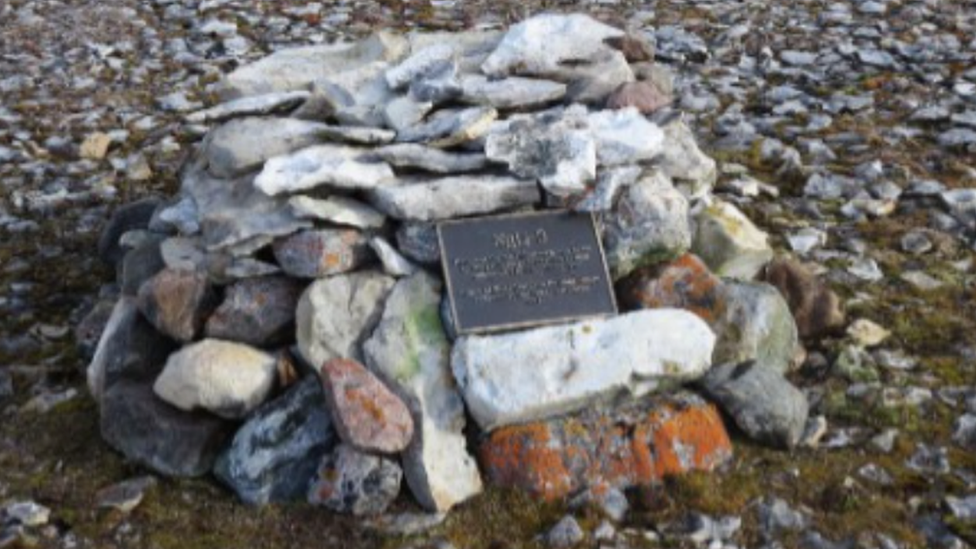
A commemorative cairn containing the remains of John Gregory was built in 2014
The officer is one of 26 crew members whose remains have been extracted from nine archaeological sites in northern Canada.
"Analysis of these remains has also yielded other important information... including their estimated age at death, stature, and health," Anne Keenleyside, a Trent anthropology professor said.
They are calling for more potential descendants to come forward.
What happened to the expedition?
In 1845, Sir John Franklin, an officer in the British Royal Navy, took two ships and 129 men towards the Northwest Territories in an attempt to map the Northwest Passage.
If charted properly, the route would allow sailors to travel from the Atlantic to the Pacific via the icy Arctic circle.
The expedition entered the Arctic in 1845 but became trapped in ice off Nunavut, Canada's northernmost territory.
Never-before-seen footage from Franklin Expedition wreck
In April 1848, 105 crew members abandoned their ice-trapped ships in a desperate effort to escape. But there would be no survivors.
The first search party set off in 1848 and searches involving teams from Canada, the UK, and the US have continued ever since.
- Published7 August 2020
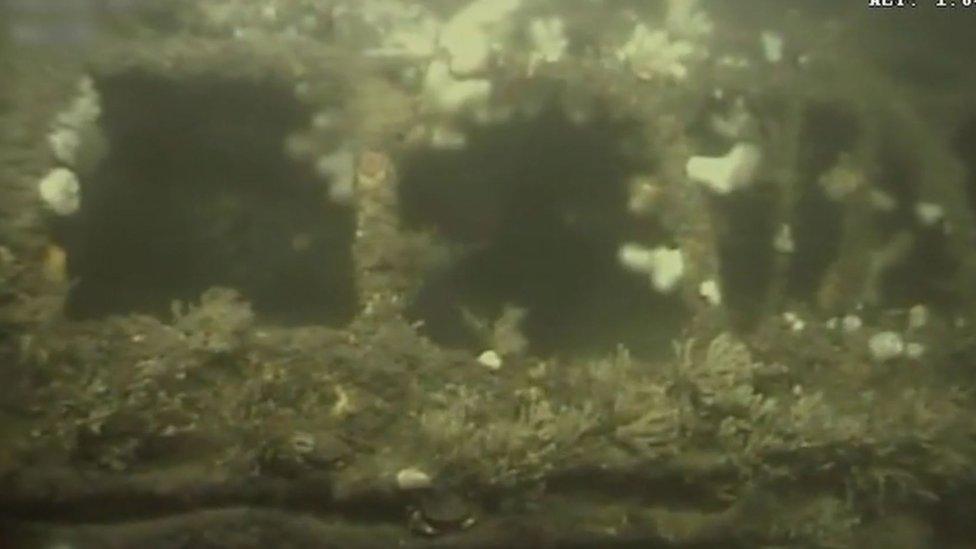
- Published11 February 2019
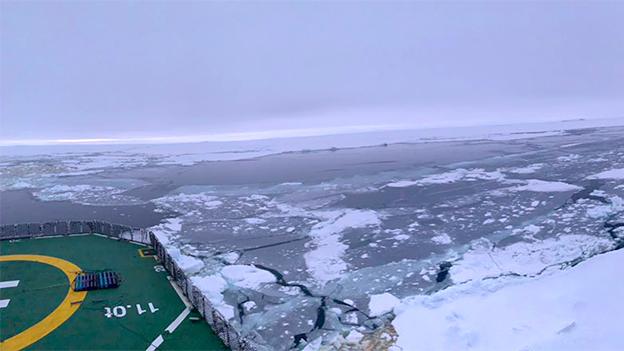
- Published22 April 2020
